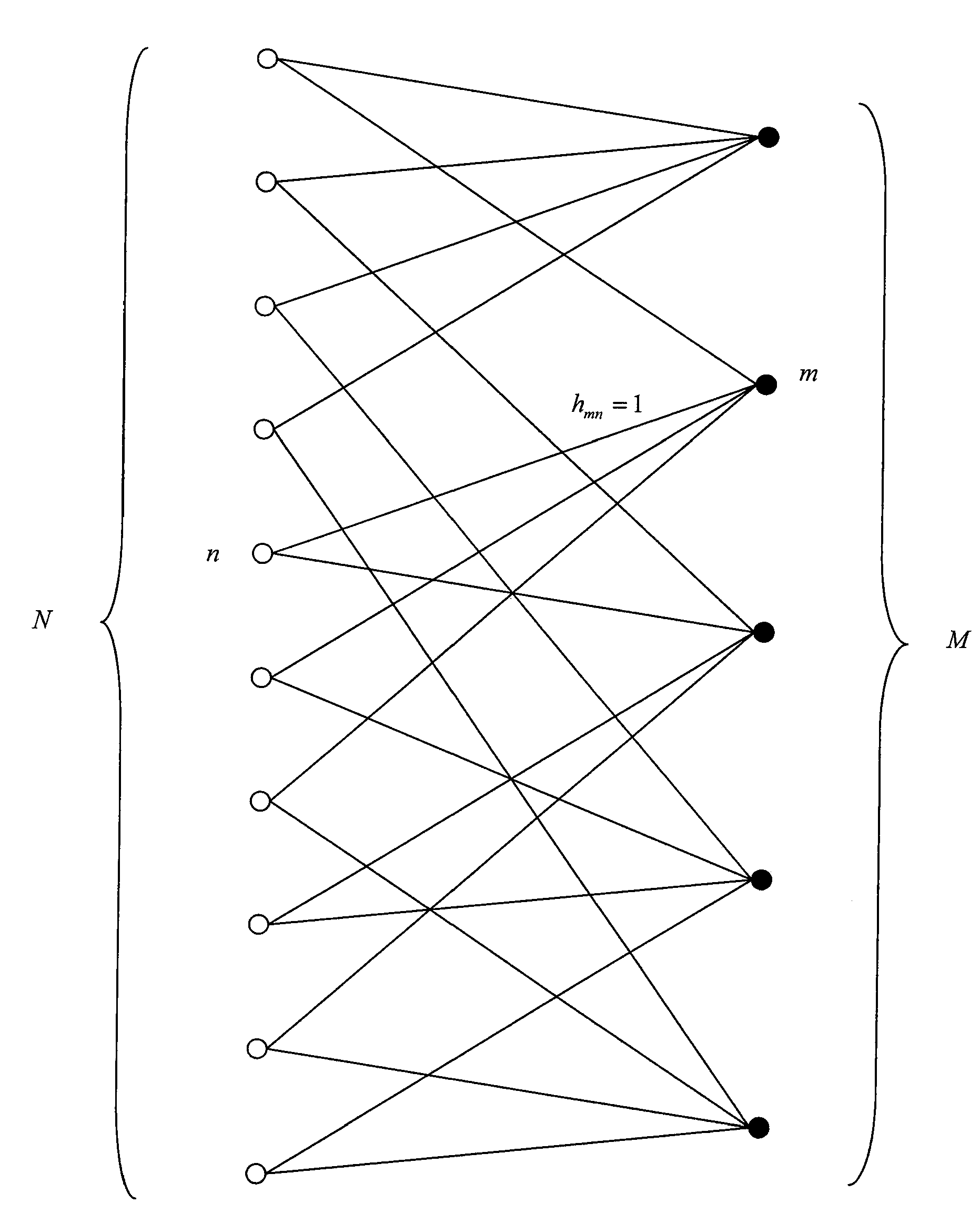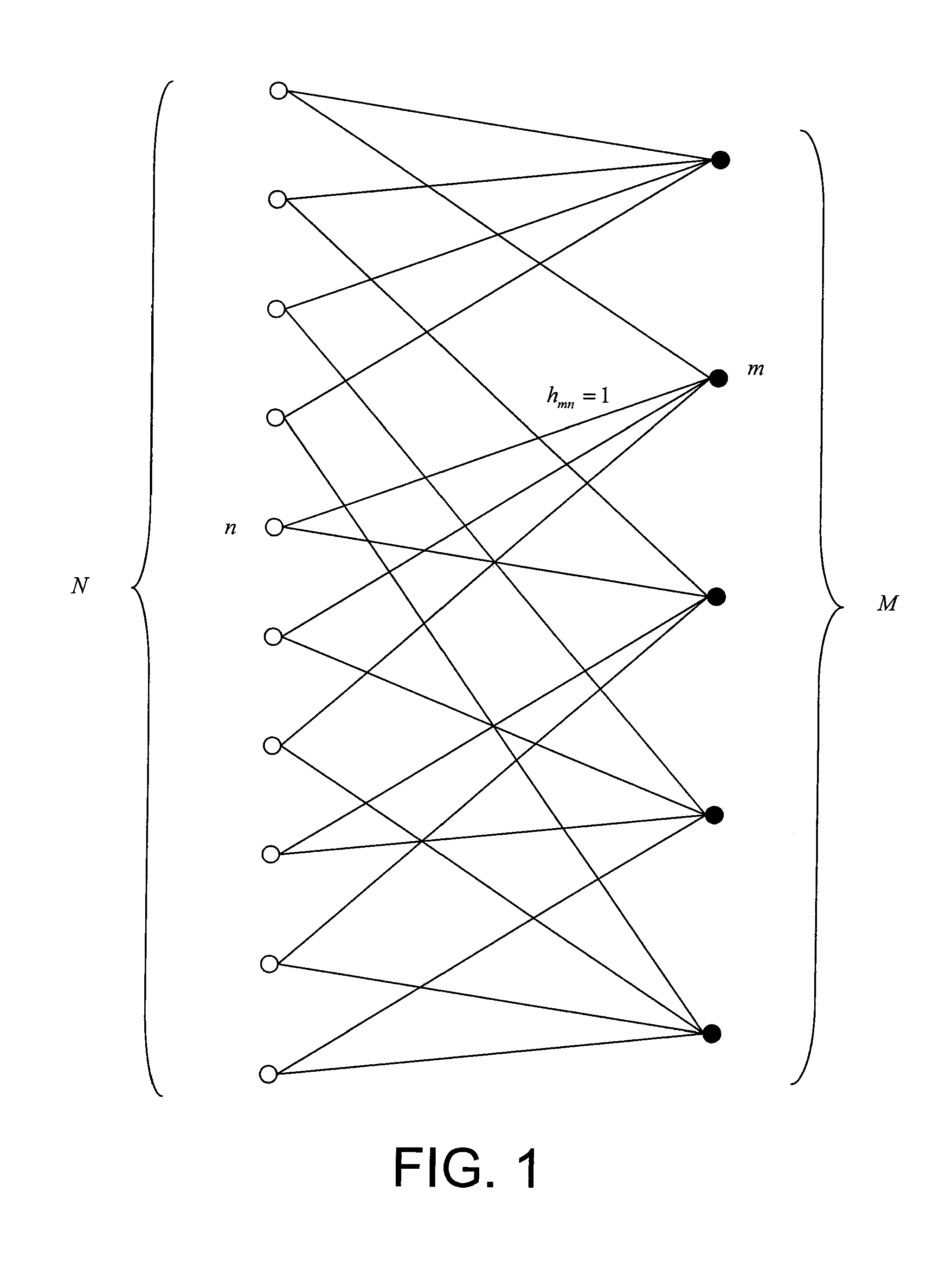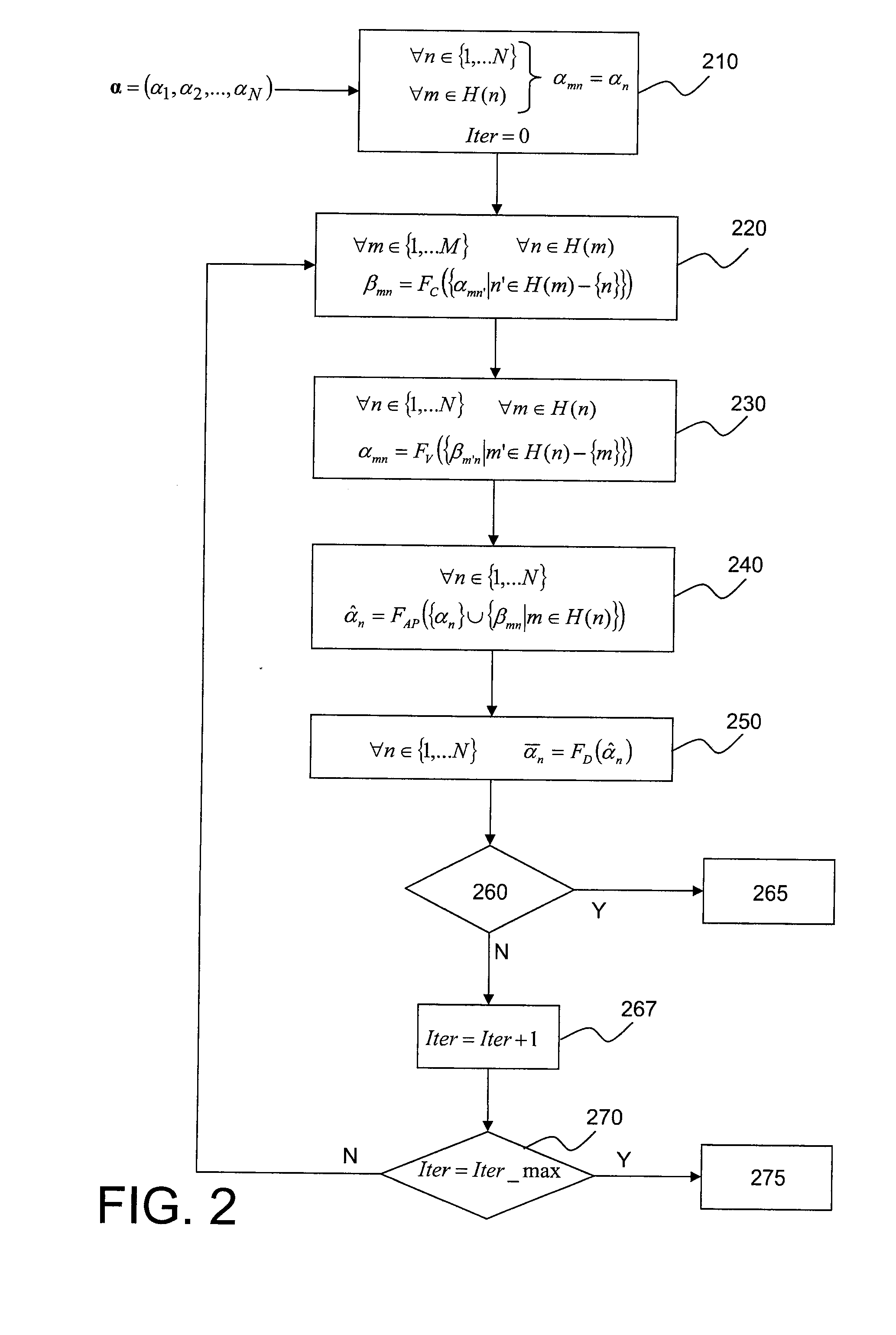Method of decoding by message passing with scheduling depending on neighbourhood reliability
a message and scheduling technology, applied in the field of ldpc codes, can solve problems such as severe degraded
- Summary
- Abstract
- Description
- Claims
- Application Information
AI Technical Summary
Benefits of technology
Problems solved by technology
Method used
Image
Examples
Embodiment Construction
[0085]We will once again consider an error correction code that could be represented by a bipartite graph with N variables and M checks.
[0086]The length of the shortest path through the graph connecting two nodes v,μ on the graph is called the distance and its length is denoted D(v,μ), expressed as a number of edges. Considering the definition of a bipartite graph, it is deduced that the distance between two nodes with the same type is an even number and the distance between two nodes of different types is an odd number.
[0087]The order d neighbourhood of an arbitrary node v of a graph Γ is defined as the set Vv(d) of nodes located at a distance less than or equal to d from v, namely:
Vv(d)={μεΓ|D(μ,v)≦d} (21)
[0088]Thus, the order 0 neighbourhood of a node consists of the node itself, the order 1 neighbourhood is the combination of the order 0 neighbourhood with all nodes adjacent to this node, the order 2 neighbourhood is the combination of the order 1 neighbourhood with all nodes a...
PUM
 Login to View More
Login to View More Abstract
Description
Claims
Application Information
 Login to View More
Login to View More - R&D
- Intellectual Property
- Life Sciences
- Materials
- Tech Scout
- Unparalleled Data Quality
- Higher Quality Content
- 60% Fewer Hallucinations
Browse by: Latest US Patents, China's latest patents, Technical Efficacy Thesaurus, Application Domain, Technology Topic, Popular Technical Reports.
© 2025 PatSnap. All rights reserved.Legal|Privacy policy|Modern Slavery Act Transparency Statement|Sitemap|About US| Contact US: help@patsnap.com



